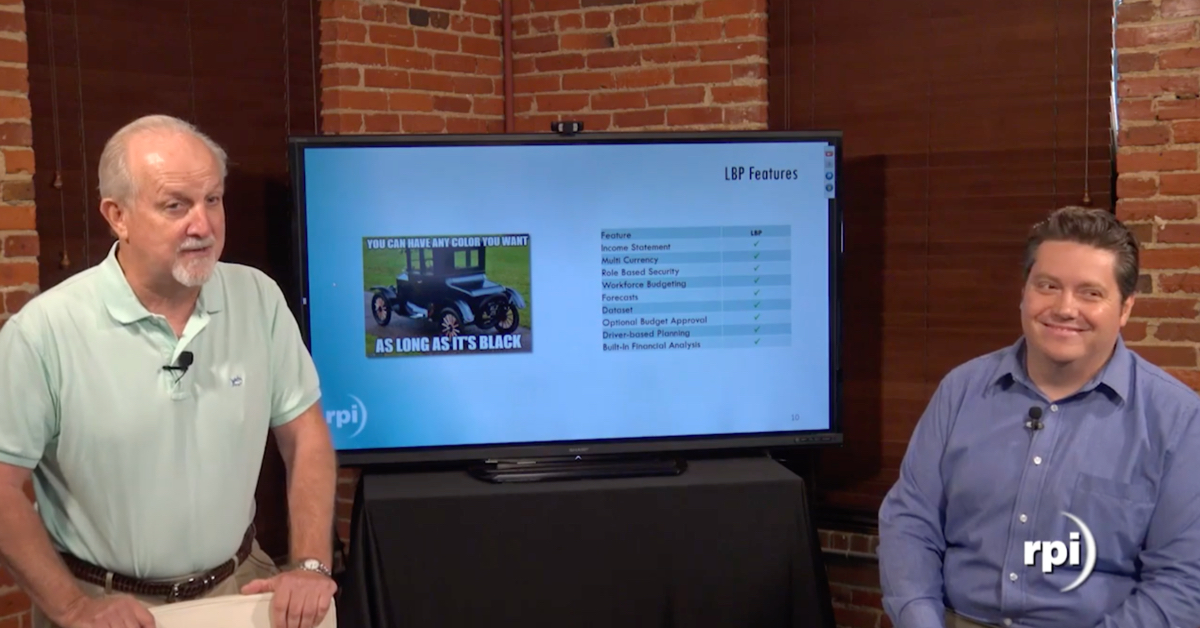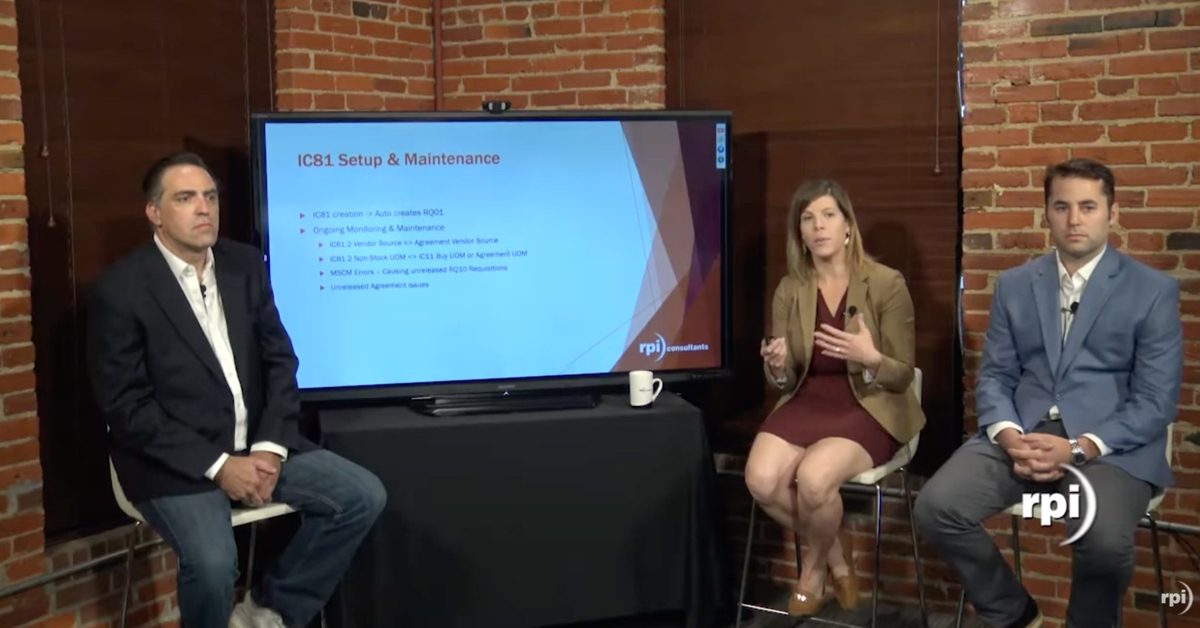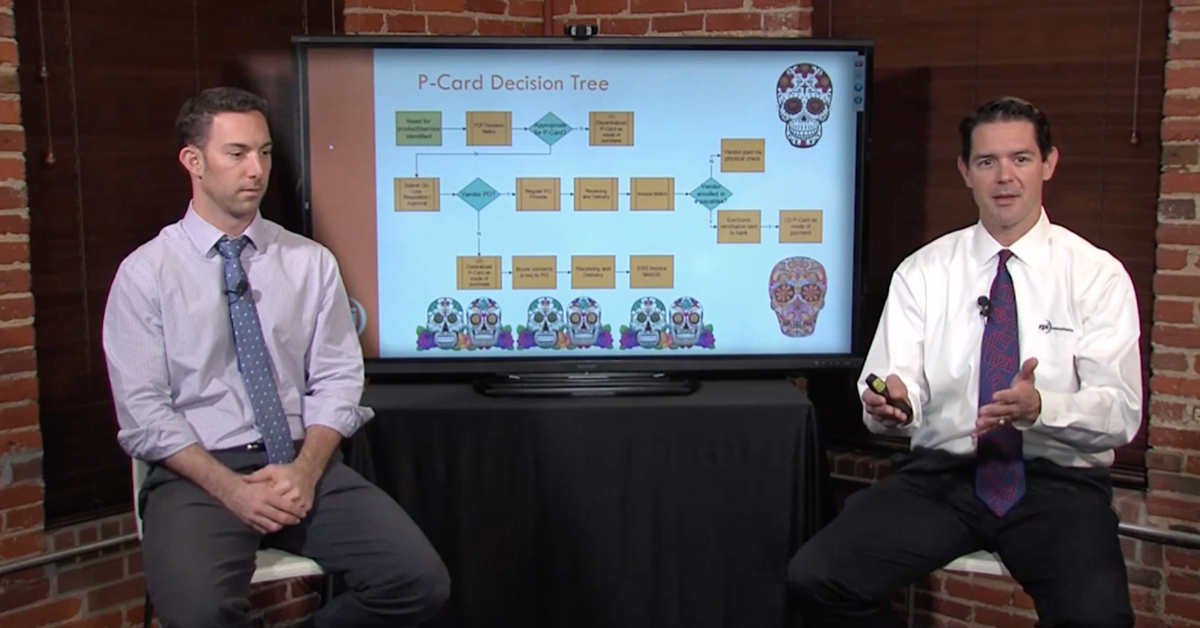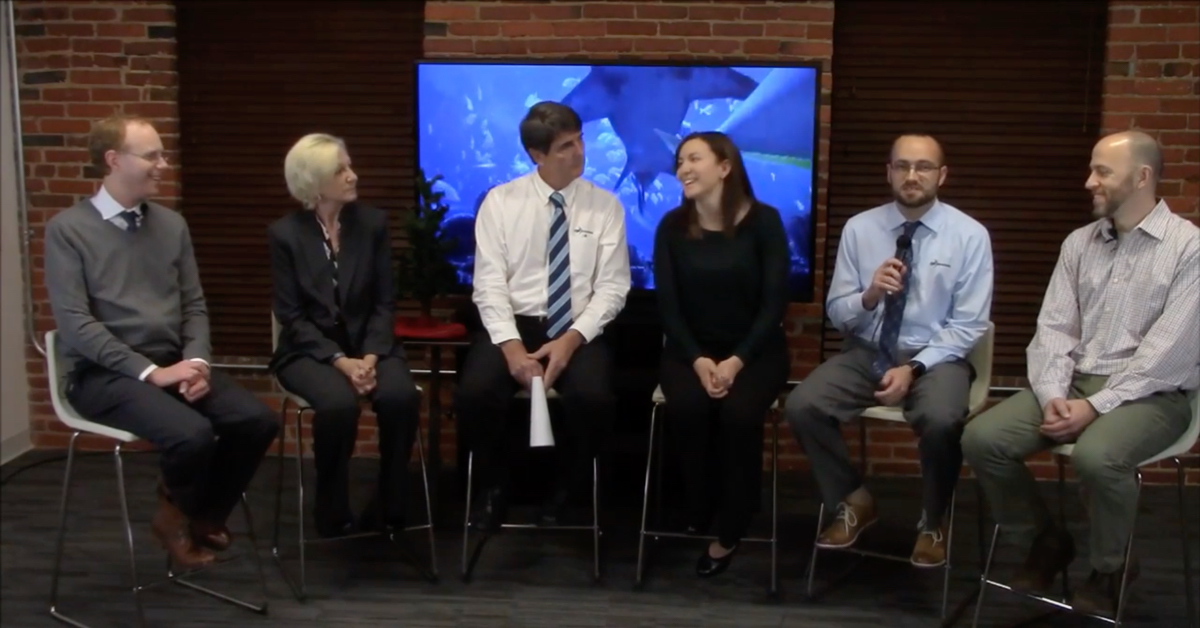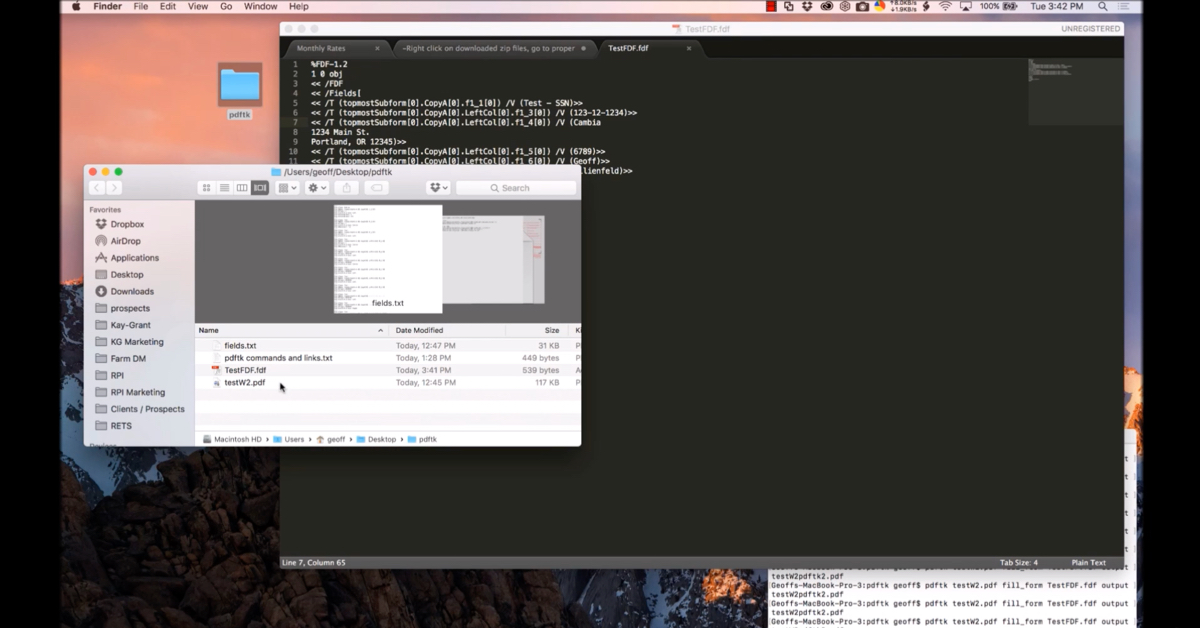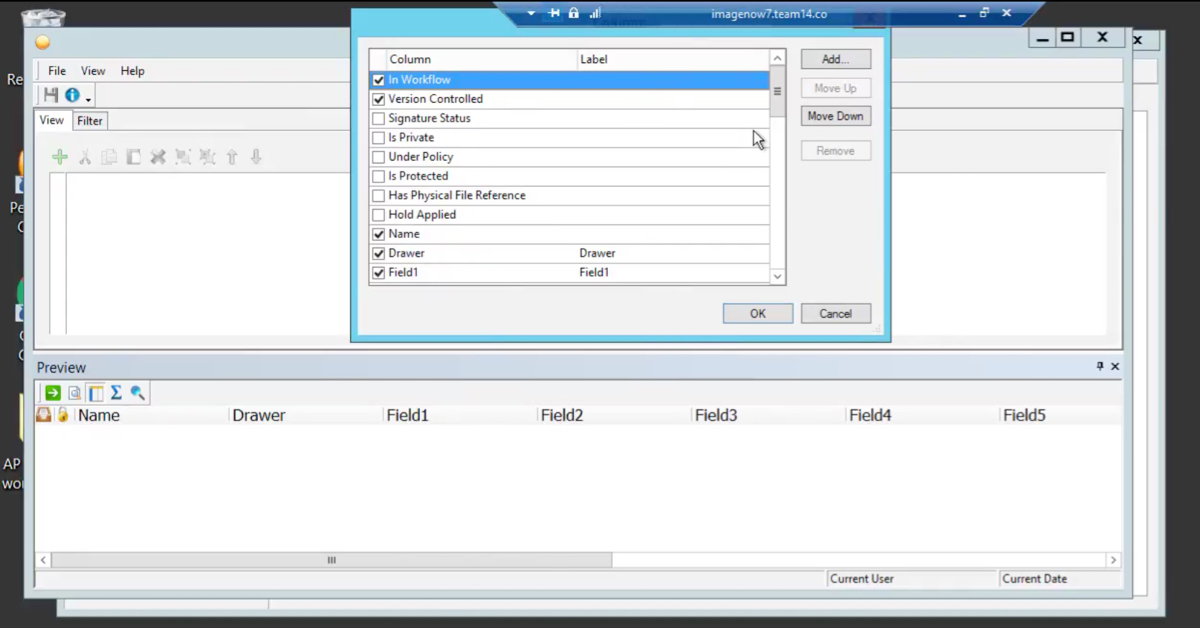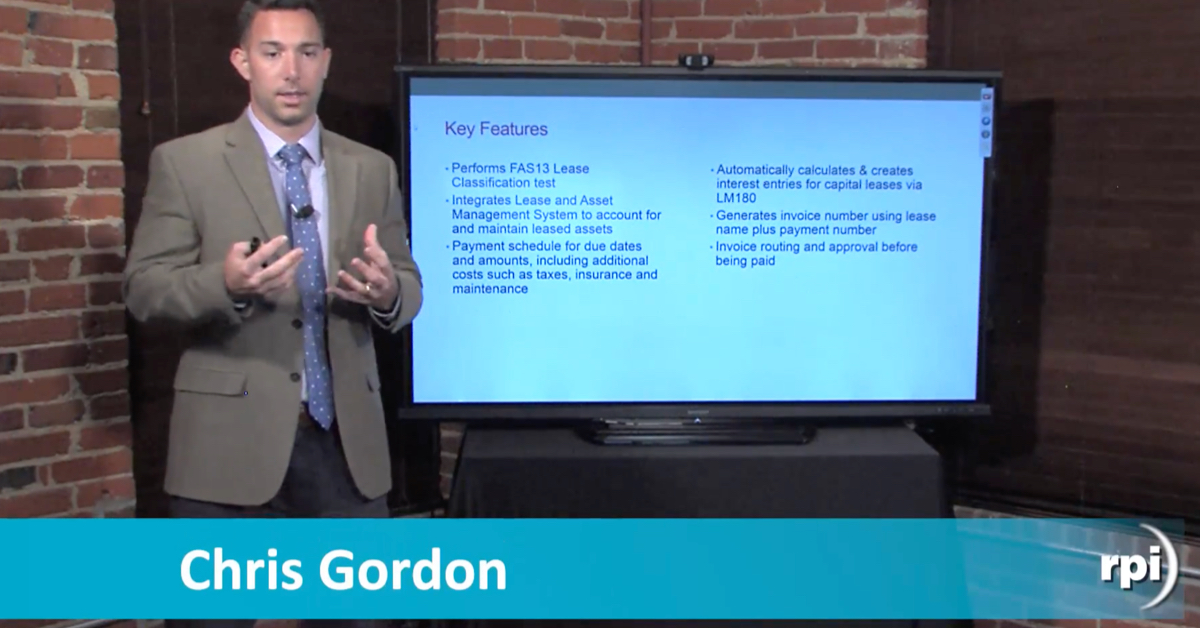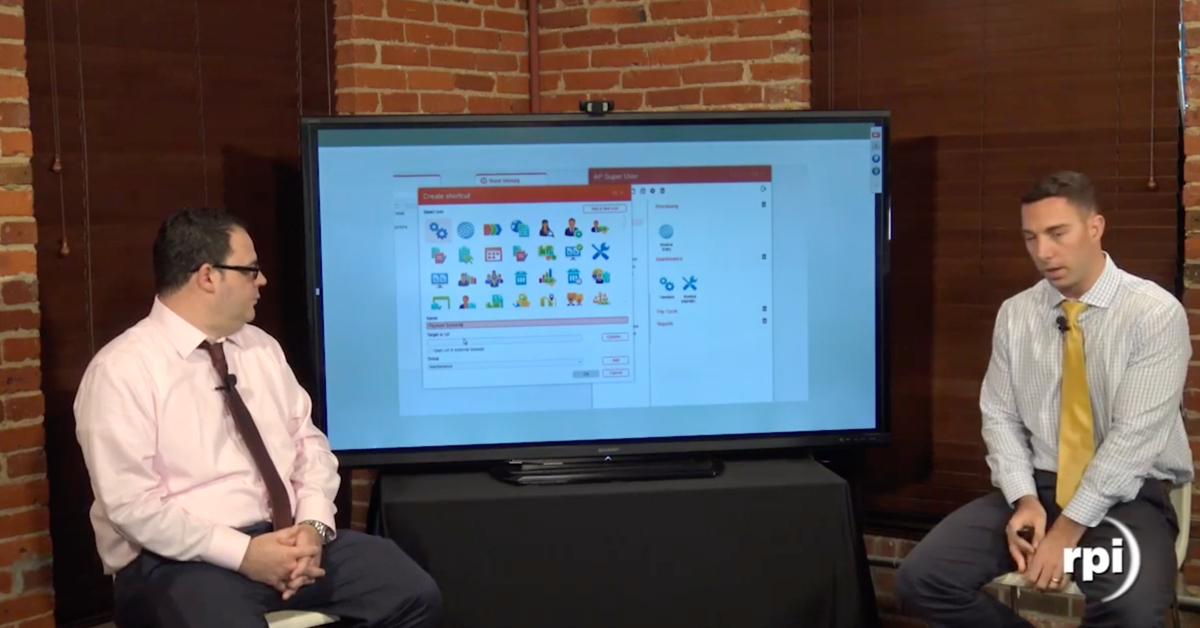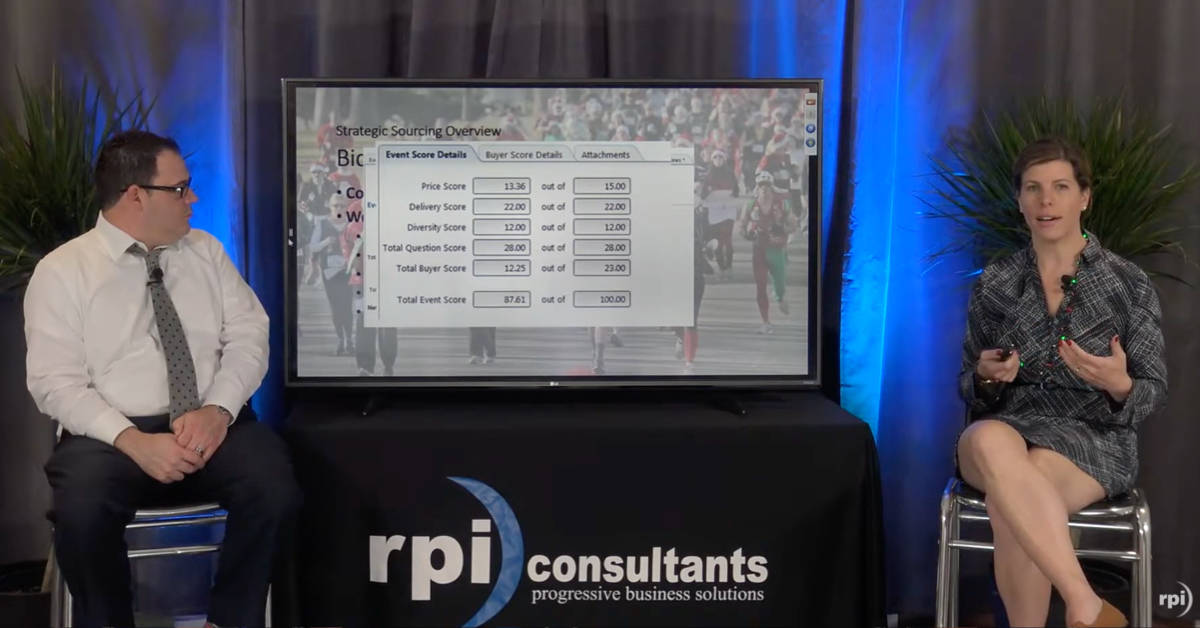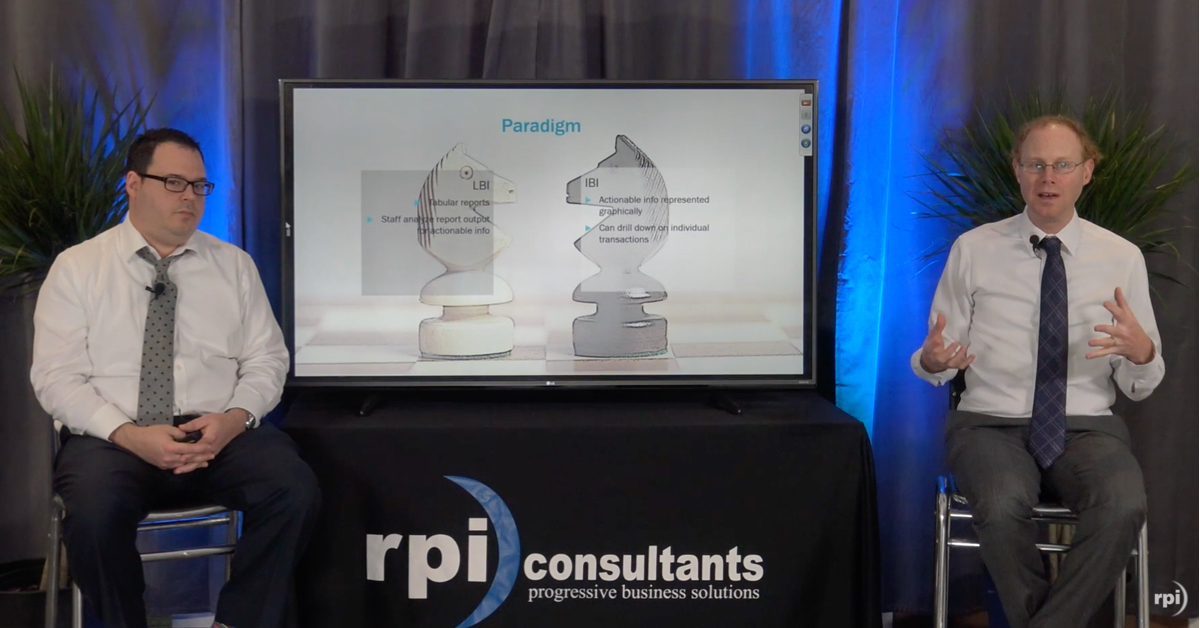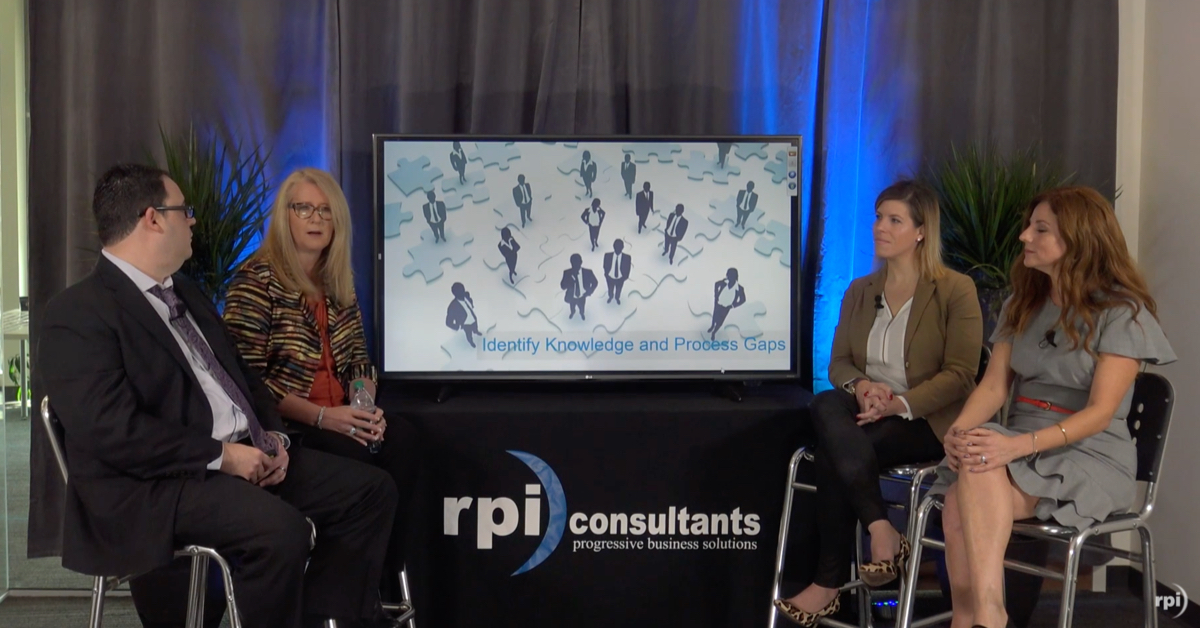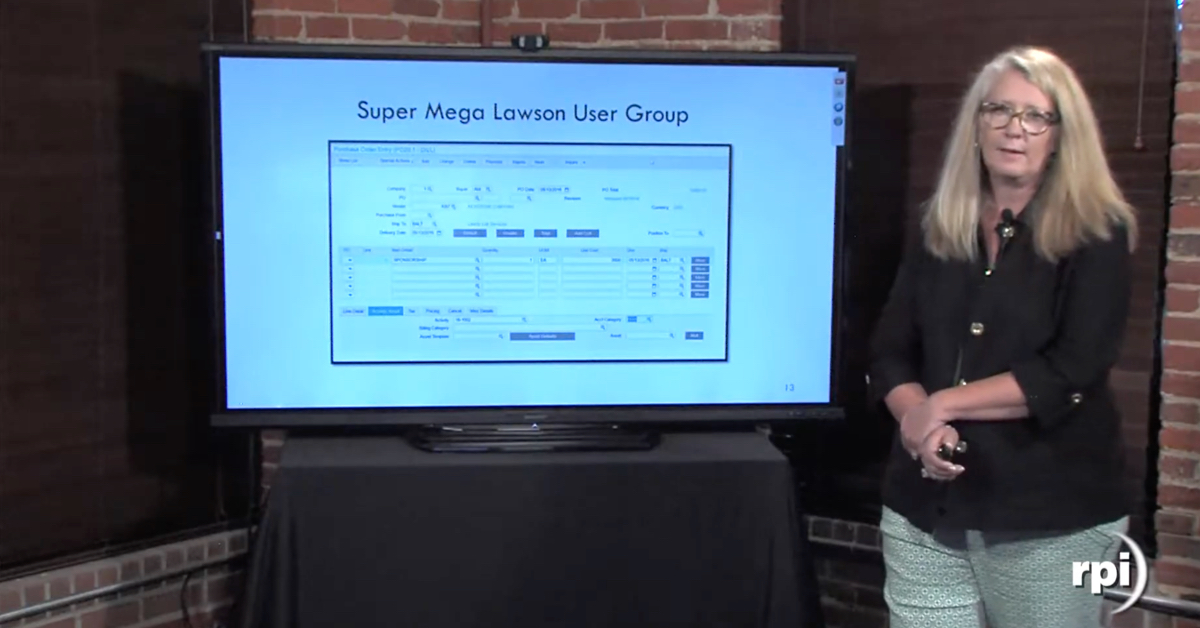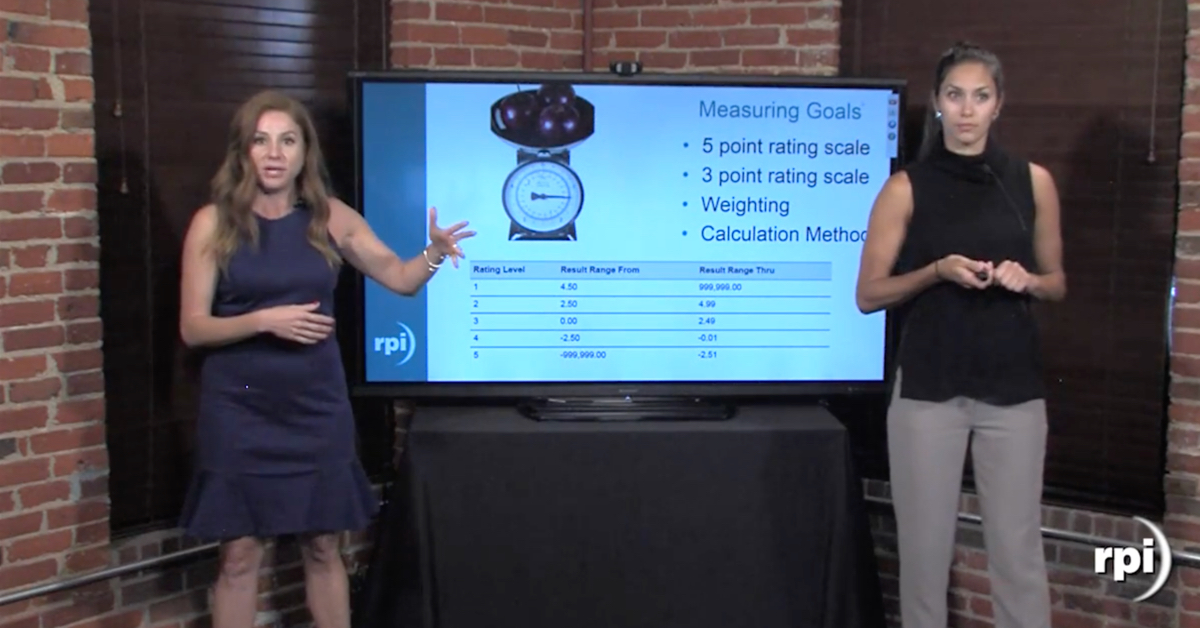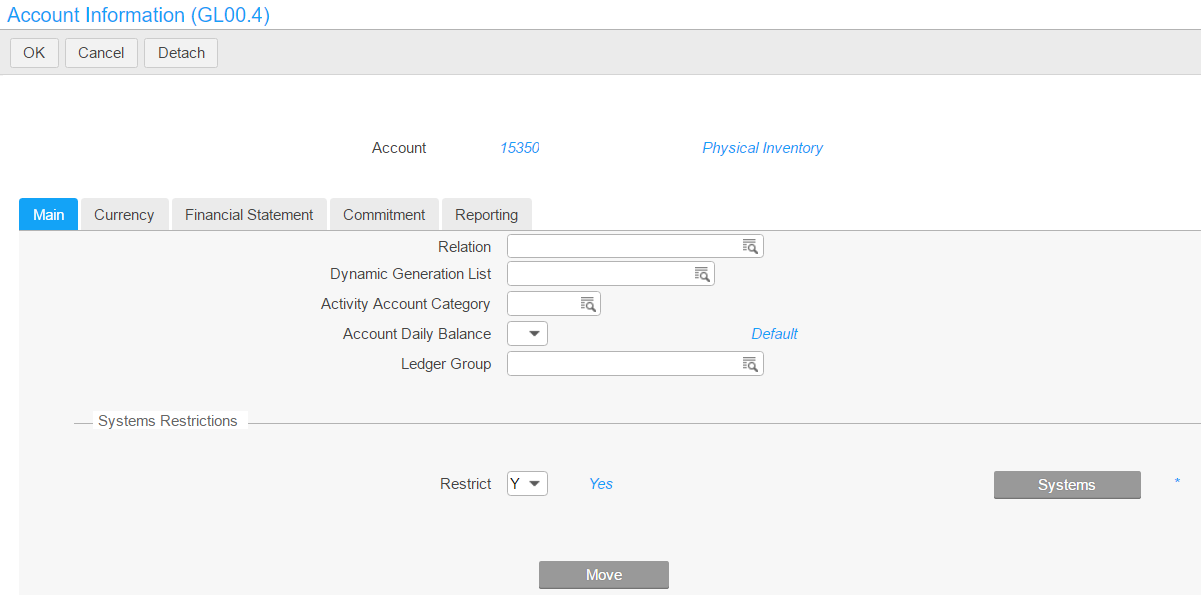Content Management with Infor Lawson
With Infor Lawson, your organization is able to track, manage, and measure its most important back office and administrative data. However, most organizations still process and maintain large amounts of physical documents and records that may contain important information. Implementing effective Enterprise Content Management solutions for document and record intensive workflows can help unlock that data and simplify your organization’s records management and retention.
Transcript
Keith Wayland:
We appreciate you taking the time to join this webinar, I think it is our 23rd out of 34 or something of that nature. We have two folks here from our Kansas City office, part of our Content Process Automation team, which specializes in a whole host of solutions, including Brainware, Perceptive, formerly known as ImageNow, Hyland OnBase, Kofax TotalAgility, ReadSoft, to name a few.
And they’re gonna talk about how you can integrate these various ECM solutions with Infor Lawson to improve your business processes. Before I hand off to them, two quick housekeeping items. One is, we encourage questions, ask away. My colleague, Mr. Michael Hopkins will ask throughout the presentation. Second is, we will be recording this session. Takes us a couple of days to get it ready and rendered, but once we have it uploaded, we will email you the link and you can re-watch and share.
And with that, I give you Mr. Ben Nichols and Mr. Alex Lindsey.
Alex Lindsey:
Thank you very much, Keith. Like he said, we are going to be talking a little bit today about content management with Infor Lawson and what does that essentially mean? So we’re gonna take a mile eye view of what’s going on in the content world and how you can get it working with Lawson.
This is the last for the Content Process Automation team, the last webinar of this series for us. We will be back in February doing a whole lot more, I’m really excited about the content we have coming up in those.
And to kind of swing into things, I’ll just introduce myself, my name is Alex Lindsey. I’m a senior solutions architect with RPI Consultants. I’ve got over seven years’ experience working in the ECM space as well as some other OCR and automation workflow softwares as well including Kofax TotalAgility. I’m also a whiskey distiller.
Ben Nichols:
Hi guys, I’m Ben Nichols. I’ve been working with RPI for a little bit now and I’ve got four plus years’ experience designing, implementing, scoping out both best practice solutions and custom business process solutions within a wide variety of industries. A lot of the time I like to focus on accounts payable automation with inside of Infor. And then I also have experience in background working with third party ECM solutions as well.
So a little bit about today, we’re gonna be chatting about our RPI consultants, learn a little bit more about our business and what we do. Then we’ll jump in and chat about what is content management and how it can impact your organization. We’ll discuss the differences between document imaging versus enterprise content strategy. And then we’ll chat about integrated software solutions and we’ll wrap up with some questions and some answers.
Alex Lindsey:
So, a little bit about RPI Consultants. We have over 80 full-time consultants, project managers, technical architects, very smart people spread across three offices. Here in Baltimore, Tampa and then Kansas City, Missouri where Ben and I hail from. If you need technical expertise in any of these software suites, we are partners with all of these, with Hyland. That includes Perceptive, OnBase, Brainware as well as Kofax, ReadSoft and Infor Lawson.
We run the gambit of services, upgrades, managed services, solution designs, anything that you want to explore, we can do that. We are also an authorized ECM partner. We are a service provider for Perceptive content and OnBase by Hyland. And that includes implementations, upgrades, we do a lot of health checks. We love to come in because there is such a robust client footprint of people across the country that have these ECMs, that have had them for years. It’s always great to have a health check and have a resource like Ben or myself come in and look under the hood and find ways and take feedback from everyone to see what they wanna improve on.
And that covers the gambit. Really, ECMs can be used in any kind of industry, manufacturing, human resources, AP and clinical as well.
Ben Nichols:
All right, so we also a certified Infor Lawson Alliance partner. We specialize in industries such as healthcare, public sector, commercial businesses and a wide variety of other industries as well. Our solution expertise includes financials, which is AP and financial process automation. And then we also have background and experience within the side of human resources, supply chain management and then more specifically, version 11 CloudSuite. And we’ve had a lot of customers expressing interest and looking forward to those next updates with inside of the Lawson platform, and we’ve had the opportunity to work with some customers implementing their version 11 CloudSuite environments.
Additionally, we have experience in payroll and technical services, and that’s not the only industries and the only expertise, but that’s some of our top ones.
So we’ll be talking a little bit now about what content management and some of the differences between content management as a document imaging repository or content management from an enterprise content strategy. So, first off, we really want you to be content with your content, right? So what is content? It really is all your stuff, and stuff includes documents, records, emails, images. Any kind of data, process history, just a collection of maybe physical material or digital material that you want to store and retrieve.
So, ERPs, and specifically we’ll be talking about Lawson today, typically doesn’t have a platform or software to handle content management. So the question really comes down to where is the content stored? Who can see that content? And what content can they see? And then when is content viewed and seen? That way you can have things like audit trails and who has viewed that content.
Alex Lindsey:
So when you’re considering content management and what to do with all your stuff, essentially, there’s a few things you really wanna consider when you’re exploring what to do with all these documents. First off, where does it come from? Are you getting it from physical locations, are they emails? Is it EDI? FTP? However you’re communicating your documents and how your documents are coming in and out of your organization no matter what they are, it’s important to understand where they come from.
Along with that, content a lot of times drives workflows. So if you get a new vendor form, for instance, or tax information from a vendor, that typically kicks off a process in Infor. What do you do with that? How do you handle that document? And once you get it, same thing with invoices, same thing with resumes, same thing with customer complaints, anything like that.
And another real big consideration is how do you access and retrieve that data? Like Ben did mention, how are you gonna be viewing those documents? Are you walking over to a filing cabinet right now and pulling that out? Is it shared across multiple storage? So a lot of people use SharePoint. A lot of people use Dropbox. A lot of people use Google Drive. Are they spread across all these different platforms? Like where are your documents now?
These are the type of considerations to think about when you’re considering content management. And really what it comes down to are content management features and what you get within ECM. So you get document and data capture. So with an ECM, you get the ability to capture documents. There’s a plethora of agents across the different ECM suites that allow you to do it and streamline it directly into a workflow.
Within content management, you also have the ability to index and organize. So like I mentioned before, if you’re using SharePoint, a lot of times, you just have a file name. So maybe you’re putting a lot of stuff with that filename for that document that you saved. There’s really not a lot of context around that. With an ECM, you have the ability to index it and retrieve it in a more structured format. So when you wanna find data this way, you look in this specific value, because it makes sense.
And like it maturely, it drives workflows. Within an ECM you can easily, from the point of capture or post-capture, just kick off a workflow process to manage those document flows. And after that process, you can actually store those documents and retrieve them at a later date. And the other big feature of content management that let’s say just normal repositories like Dropbox or SharePoint or anything like that. A lot of them have retention policy tools in place.
So essentially, a process to remove documents. So maybe you’re a company that’s very paper heavy right now and you have Iron Mountain coming around every once in a while to shred a bunch of documents. Well, there’s a policy in place. Which is for you can basically remove those documents. With an ECM, it’s the same thing. Because they’re electronic, you still need to have space, so you’re not physically taking up space necessarily anymore, but you are taking up storage on a serve somewhere. And if you don’t need those documents and you have more documents coming in, just save that storage and let a retention policy manager handle those types of things.
Ben Nichols:
Yep. So now we’ll be talking a little bit about document imaging versus ECM. So, document imaging really is the concept of simple capture and store software. Very ERP or department-centric and it’s a low implementation / support cost comparative. It’s not shareable within the entire organization so it’s very specific to those unique business processes for that department or area with inside of a business. And it also ends up missing the lack of flexibility for workflow processes and then security as well, because it doesn’t encompass everything.
And on the flip side, enterprise content management, or what we’ve been referring to as ECM, really is more of a robust and flexible capture, index, workflow and retention system. It integrates with multiple ERPs, specifically today we were talking about Lawson, but other business systems are also able to integrate with enterprise content management. Typically there is a higher cost of implementation and support, but those costs are shareable across departments, because you can integrate all those processes and unique aspects of your entire organization into one solution for content management.
So next up, one of the offerings directly from Lawson, very recent, is now included with inside of Lawson version 11, is Infor Document Management. So you maybe have heard a little bit about Infor Document Management, it’s referred to as IDM. It has ECM functionality inside of the Lawson environment, it gives you some initial content management features and functionality, allowing you to manually upload those digital documents and such we were talking about.
Whether it’s emails, invoices, supporting documentation, into an area with inside of the Lawson platform. So, for a long time, Lawson has not had this functionality and that’s kind of where ECM’s Perceptive Content and OnBase have kind of come in to fill that gap. And so we’re now seeing Lawson push for document management and content management inside of the platform, which is long term gonna be really great for Lawson customers specifically. Because you’re gonna be able to have a one stop shop for your data and your content management.
Few things with this, we’ll be looking at an example of some of the core functionality with IDM here in the next slide. But I want to talk a little bit about IDM realistically and right now, it’s been released recently inside of version 11. Just this last month of November, Lawson released the capture piece of Infor Document Management which actually facilitates the scanning of documents, some OCR functionality and such.
So those functionalities are now rolling into Info Document Management. It’s a new entrant into the arena, so it’s lacking some of those other features that we’ve seen in other ECMs, but they are working hard to getting full function and less malfunctionality into the system. Some things that are here to come would be syncing data between IDM and CloudSuite Financials. Actual additional document types that support a wide variety of other documents, and data creation with inside of CloudSuite.
Additionally, there is some desire to see this solution actually export data like 1099 documents and creation, and that’s still not there in the software yet, but is here to come in the next few quarters starting next year.
So on our next slide here, I just wanted to show pretty cool functionalities associated with Infor Document Management. What you’re gonna see, if you had the joy of joining us for our previous webinar earlier today on content management. We’re actually back inside of CloudSuite Financials, version 11, and we’re in the invoice processing section where we have the ability to see our invoices and the statuses those invoices are in.
But here, to the very right of that document, we’ve actually got something called the contextual app. And what that does, is that has the ability to pull in information associated with whatever item you have selected with inside of CloudSuite. So in our example here, we’re gonna see we have an Infor supplier invoice. We’re gonna see the image of the invoice, and then if we were to scroll in this, we would actually have the document keys associated with each invoice line. So we’d see things like the invoice number of INV181 and the vendor and the company and so on below the image.
Additionally, if you were working and creating invoices with inside of the AP automation solution, you can manually upload the invoice image to the document and have it accessible there. Now, one caveat with this, I wanna just point out. Right now, one key functionality with IDM, it’s specific to the AP automation solutions, is that the IDM attach document is not accessible to the approvers just yet. That functionality is going to be coming here. It’s supposed to be quarter one of 2019, so there are some other processes related to AP invoices specifically in order to get the invoice available and accessible to the approvers.
So IDM doesn’t necessarily accomplish everything just yet, but it is getting there. And then last, on our far right, we’ve got a listing of some of the document types available. Accounting entities, assets, deposits, items, invoices, cash receipts, cash payment, just out of the box there’s about 88 different document types. And this contextual app, additionally, not only does it work with inside of the AP automation screen, but for example, in version 11 if you were to jump to your vendor screen or your payment screen and there is pieces of data associated directly with this invoice, you’d actually be able to see this invoice on that screen as well. It’s got some of that logic built in to see what screen you are on, what piece of data you are accessing and see if it has any referenceable invoice images or other images stored in IDM.
Alex Lindsey:
So kind of jumping forward into integrated software solutions, so how would you use this? If you were just storing documents, if you’re an Infor client and you’re just storing documents pretty much all over the place, how would you integrate some of your departments and your solutions with an ECM? First and foremost, there’s also accounts payable automation, which we talk about ad nauseum. In fact, our previous webinar was about that.
So you can, and for invoice processing, for your accounts payable processing, so all those financial documents that Ben was just talking about, you can front end your document capture with one of these OCR technologies. OCR meaning optical character recognition. And we can basically scan our email document in, it extracts data off of that, compares it versus Lawson and validates it. Can push it through an APIA workflow or even through an ECM workflow but ultimately the documents will end up within a perspective software or an OnBase by Hyland to basically have them retrieved, have them searched, anything like that.
Another one is the vendor setup and there’s also a vendor portal as well. So new vendors, you get your tax documents, you typically in an ECM type solution, you would capture the document into something like Perceptive or OnBase. You’d have the document up, it would enter a short workflow where you would enter that vendor information into Lawson to process that vendor record and then create a link to that document within the ECM itself, so you can basically later find it.
With that, you can also do a lot of embedded links within Lawson to retrieve those documents at a later date, from there or you could just have it searchable within the ECM. Subsequently, the Kofax offers a ReadSoft supplier portal which is a great tool to kind of improve your partnership with a lot of your suppliers. There’s a lot of self-service access so your vendors can submit invoices to you there, they can track where it is, where the payment is, you can flip POs to invoices, there’s a lot of integration there with Infor as well to kind of give a little bit more of a content management feel to your documents that are coming in and out.
And again with that, that would flow nicely into an ECM product like Perceptive or OnBase.
Ben Nichols:
So employee records management. This is kind of in the HR process. If we looked at this process specifically with inside of content management, we consider like the recruiting process or the onboarding of employees into your organization. These workflows with inside of content management, with inside of solutions like OnBase or Perceptive can facilitate not only the scanning of an application or supporting documentation for that employee, but it can also help handle the workflow for the onboarding portion of it.
So maybe you’ve emailed out to your new potential employee that they need to pass in some tax related information and documentation, they send it back to you, that can be handled with inside of the workflow of content management. Additionally, this can accommodate the entire recruiting process, onboarding, compensation and bonus information or handling specific and unique scenarios like contractors.
Alex Lindsey:
Right. So it’s great for workflow processing in that sense as well. They can also include form processing. And not to mention the HM sphere as well, content management’s great for that. Some additional products and opportunities around that. So we’ve mentioned OnBase and Hyland but those really are two of the best ECMs out there in our opinion, anyway. But they really are. They’re very robust.
Ben Nichols:
Yes.
Alex Lindsey:
They’re very scalable, they both have workflow components that are great, capture methods that are great, and integrations with Infor that work really well. You can also throw in there, intelligent data capture. So Kofax TotalAgility which I mentioned, or Brainware by Hyland and there’s also ReadSoft specifically for invoices.
But essentially, you can use these intelligent data capture tools to extract data from any document, really. Kofax TotalAgility and Brainware specifically aren’t geared for just invoice processing or one thing or another. You can actually use these tools to extract data off of any type of document that you really have. As long as we can apply logic and validation around it, those tools are great for that.
And there’s also digital forms. Those are great for integrating with an ECM as well. So if you have a workflow process in place, like a form submittal, you can actually use Yoga Forms, which is a product that we maintain, that we’ve built up to basically say, “Hey, I want to submit an expense report,” would be one, or a new employee or a check request or something like that. You can use Yoga Forms to kick that process off, and a workflow, create a document within the ECM and integrate directly with Infor after that.
So overall, hopefully that gives you a good idea of what content management can look like when you are an Infor customer, if you’ve got documents all over the place. Or maybe you actually have an OnBase or Perceptive right now, but you don’t have all your departments. We really encourage our clients to leverage that. Get your ROI from your ECM if you can, if you don’t have one yet, then really start exploring what that could look like for you guys and your departments. We’ll open up for questions now.
Michael Hopkins:
All right, just a reminder, if you’ve got questions, feel free to put those into the GoToMeeting interface. First question we have is, how does ECM or how does my ImageNow integrate with V11 CloudSuite?
Ben Nichols:
All right, I can take that. So very much like it integrates with version 9 and version 19 right now. There’s a lot of different venues that you can get the data back into Lawson CloudSuite version 11 and it doesn’t necessarily change very drastically, it’s just where you’re gonna put that in place, that data in. There’s a slew of opportunities, so you can use API or API web service calls and things like that. You can use, we do have an in-house connector, Yoga Connect, right? That we can use to pass that data in as well. And then ultimately, if it comes down to a solution where we have to utilize flat files, there are means and mechanism to import that data as well.
Through custom IPA flows or spreadsheet designer, just depends on each customer’s unique solution and need.
Alex Lindsey:
So if you have ImageNow for instance, application plan should still work as well for the whole screen scrape technology to get the data off of there.
Ben Nichols:
Yep.
Michael Hopkins:
Other than the ones you’ve mentioned, what are the top department opportunities for ECM workflows and integration?
Alex Lindsey:
With Infor? I mean, I’m gonna say financials. Automatic, like invoice processing, there’s been a lot of money invested into softwares to automate these processes and the clients that we’ve deployed these for, it’s worked really well for them and they’ve seen a lot of ROI in streamlining that.
I would say employee management as well. Any employee comes with a load of not baggage, but documentation. A lot of that documents out there associated with an employee. I’ve probably got a file this big. Keith probably knows what’s in there. But all those documents need to be stored somewhere. So I think employee management –
Ben Nichols:
It’s a big one.
Alex Lindsey:
…is a really big one as well.
Ben Nichols:
Yeah, HR related tasks. Healthcare as well, there’s processes with inside of the healthcare environment that definitely has benefit utilizing something like an ECM and Perceptive content to manage those workflows.
Michael Hopkins:
Right, one more question. Is there a license fee associated with Yoga Forms and how many forms can I use?
Alex Lindsey:
No, it’s just a one-time setup, essentially. And you can basically just set up as many. When you engage with us, we’ll typically set up one or two forms for you and then basically just hand it off from there.
Keith Wayland:
Great, thank you guys very much. Wonderful presentation. Certainly there’s a lot of content related to Yoga on our YouTube site, if you go to YouTube, type in RPI Consultants. As well as many other webinars from the content process automation team here at RPI, with Mr. Alex Lindsey and Ben Nichols. Thank you very much for attending, thank you guys for presenting and see you soon.
Ben Nichols:
Thank you.
Alex Lindsey:
Thank you guys.
Keith Wayland:
February. First one’s then.
Alex Lindsey:
Yes. Thank you.
Want More Content?
Sign up and get access to all our new Knowledge Base content, including new and upcoming Webinars, Virtual User Groups, Product Demos, White Papers, & Case Studies.
Entire Knowledge Base
All Products, Solutions, & Professional Services
Contact Us to Get Started
Don’t Just Take Our Word for it!
See What Our Clients Have to Say

Denver Health
“RPI brought in senior people that our folks related to and were able to work with easily. Their folks have been approachable, they listen to us, and they have been responsive to our questions – and when we see things we want to do a little differently, they have listened and figured out how to make it happen. “
Keith Thompson
Director of ERP Applications

Atlanta Public Schools
“Prior to RPI, we were really struggling with our HR technology. They brought in expertise to provide solutions to business problems, thought leadership for our long term strategic planning, and they help us make sure we are implementing new initiatives in an order that doesn’t create problems in the future. RPI has been a God-send. “
Skye Duckett
Chief Human Resources Officer

Nuvance Health
“We knew our Accounts Payable processes were unsustainable for our planned growth and RPI Consultants offered a blueprint for automating our most time-intensive workflow – invoice processing.”
Miles McIvor
Accounting Systems Manager

San Diego State University
“Our favorite outcome of the solution is the automation, which enables us to provide better service to our customers. Also, our consultant, Michael Madsen, was knowledgeable, easy to work with, patient, dependable and flexible with his schedule.”
Catherine Love
Associate Human Resources Director

Bon Secours Health System
“RPI has more than just knowledge, their consultants are personable leaders who will drive more efficient solutions. They challenged us to think outside the box and to believe that we could design a best-practice solution with minimal ongoing costs.”
Joel Stafford
Director of Accounts Payable

Lippert Components
“We understood we required a robust, customized solution. RPI not only had the product expertise, they listened to our needs to make sure the project was a success.”
Chris Tozier
Director of Information Technology

Bassett Medical Center
“Overall the project went really well, I’m very pleased with the outcome. I don’t think having any other consulting team on the project would have been able to provide us as much knowledge as RPI has been able to. “
Sue Pokorny
Manager of HRIS & Compensation
MD National Capital Park & Planning Commission
“Working with Anne Bwogi [RPI Project Manager] is fun. She keeps us grounded and makes sure we are thoroughly engaged. We have a name for her – the Annetrack. The Annetrack is on schedule so you better get on board.”
Derek Morgan
ERP Business Analyst

Aspirus
“Our relationship with RPI is great, they are like an extension of the Aspirus team. When we have a question, we reach out to them and get answers right away. If we have a big project, we bounce it off them immediately to get their ideas and ask for their expertise.”
Jen Underwood
Director of Supply Chain Informatics and Systems
Our People are the Difference
And Our Culture is Our Greatest Asset
A lot of people say it, we really mean it. We recruit good people. People who are great at what they do and fun to work with. We look for diverse strengths and abilities, a passion for excellent client service, and an entrepreneurial drive to get the job done.
We also practice what we preach and use the industry’s leading software to help manage our projects, engage with our client project teams, and enable our team to stay connected and collaborate. This open, team-based approach gives each customer and project the cumulative value of our entire team’s knowledge and experience.


